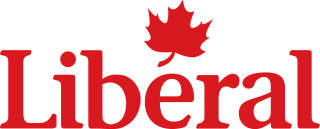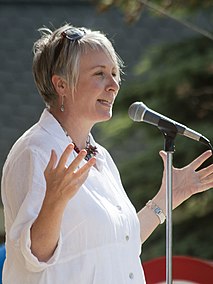
The Canadian federal election of 1921 was held on December 6, 1921, to elect members of the House of Commons of Canada of the 14th Parliament of Canada. The Union government that had governed Canada through the First World War was defeated, and replaced by a Liberal government under the young leader William Lyon Mackenzie King. A new third party, the Progressive Party, won the second most seats in the election.

The Conservative Party of Canada has gone by a variety of names over the years since Canadian Confederation. Initially known as the "Liberal-Conservative Party", it dropped "Liberal" from its name in 1873, although many of its candidates continued to use this name.
The Unionist Party was a centre-right historical political party in Canada, composed primarily of former members of the Conservative party with some individual Liberal Members of Parliament. It was formed in 1917 by MPs who supported the "Union government" formed by Sir Robert Borden during the First World War, formed the government through the final years of the war, and was a proponent of conscription. It was opposed by the remaining Liberal MPs, who sat as the official opposition.
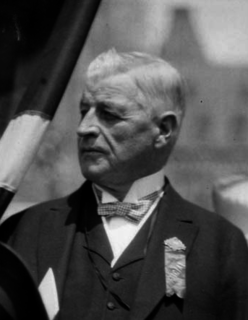
Hugh Guthrie, was a Canadian politician and Cabinet minister in the governments of Sir Robert Borden, Arthur Meighen and R. B. Bennett.
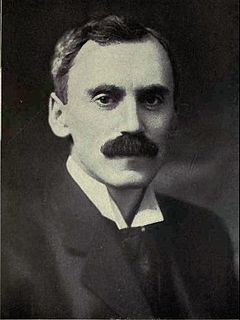
Newton Wesley Rowell, was a Canadian lawyer and politician and leading lay figure in the Methodist church. Rowell led the Ontario Liberal Party from 1911 to 1917 and put forward a platform advocating temperance. Rowell's Liberals failed to oppose the Whitney government's passage of Regulation 17 which restricted the teaching of the French language in schools alienating the province's French-Canadian minority.
William Edmund Newton Sinclair, known as W. E. N. Sinclair, was a Canadian barrister, solicitor and interim leader of the Ontario Liberal Party.
The first three leaders of the Liberal Party of Canada were not chosen at a leadership convention. Alexander Mackenzie and Edward Blake were chosen by the party caucus. Wilfrid Laurier was also chosen by caucus members with the party convention of 1893 ratifying his leadership. The most recent leadership election was held in 2013.

William Stevens Fielding, was a Canadian Liberal politician, the seventh Premier of Nova Scotia (1884–96), and the federal Minister of Finance 1896–1911 and 1921–25.
This is a list of results of leadership elections for the Ontario Liberal Party, a political party in Ontario, Canada.

Prior to the 1917 federal election in Canada, the Liberal Party of Canada split into two factions. To differentiate the groups, historians tend to use two retrospective names:

The 1917 Canadian federal election was held on December 17, 1917, to elect members of the House of Commons of Canada of the 13th Parliament of Canada. Described by historian Michael Bliss as the "most bitter election in Canadian history", it was fought mainly over the issue of conscription. The election resulted in Prime Minister Sir Robert Borden's Unionist government elected with a strong majority and the largest percentage of the popular vote for any party in Canadian history.

The 1976 Progressive Conservative leadership election was held at the Ottawa Civic Centre in Ottawa on February 22, 1976, to elect a leader of the Progressive Conservative Party of Canada to replace Robert Stanfield, who had resigned after losing the 1968, 1972, and 1974 elections. It unexpectedly elected a 36-year-old, little-known PC Member of Parliament from Alberta as the party's new leader. Joe Clark defeated Claude Wagner on the fourth ballot of the convention by a margin of 65 votes.
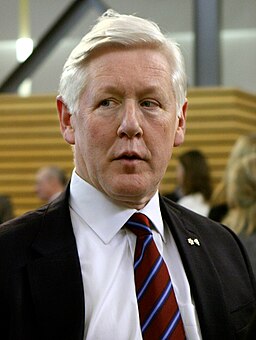
The Liberal Party of Canada leadership election of 2006 was prompted by outgoing Prime Minister Paul Martin's announcement that he would not lead the Liberal Party of Canada into another election, following his party's defeat in the 2006 federal election in Canada. The party's biennial convention, already scheduled to occur from November 29 to December 1, 2006 in Montreal's Palais des congrès, was followed by the party's leadership convention at the same venue occurring December 2 to December 3, 2006. As the winner, Stéphane Dion led the Liberal Party into the 2008 federal election.

Frank Broadstreet Carvell, was a Canadian lawyer, businessman, and politician.
The 1948 Liberal Party of Canada leadership election was called to replace retiring Liberal leader and sitting Prime Minister William Lyon Mackenzie King. The convention was held exactly 29 years after the 1919 leadership convention that saw King elected Liberal leader.

Arthur Meighen was a Canadian lawyer and politician who served as the ninth prime minister of Canada, in office from July 1920 to December 1921 and again from June to September 1926. He led the Conservative Party from 1920 to 1926 and from 1941 to 1942.
This article covers the history of the Liberal Party of Canada.

A Conservative leadership convention was held on October 12, 1927 at the Winnipeg Amphitheatre in Winnipeg, Manitoba. The convention was held to choose a new leader of the Conservative Party to choose a successor to former Prime Minister of Canada Arthur Meighen who had led the party since 1920. This was the first time the Conservatives used a leadership convention to choose a leader. Previous leaders had been chosen by the party's caucus, the previous leader, or by the Governor General of Canada designating an individual to form a government after his predecessor's death or resignation.

This article is the Electoral history of Robert Borden, the eighth Prime Minister of Canada (1911-1920).
